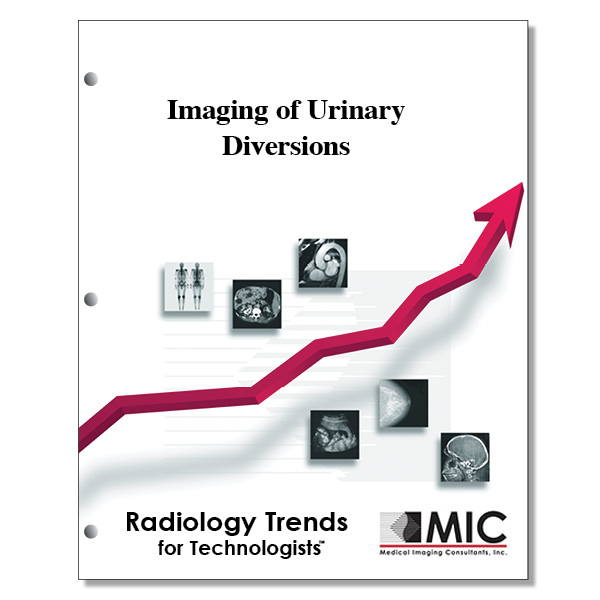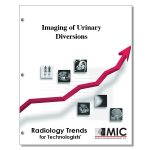

Imaging of Urinary Diversions
A review of surgical techniques for the most common urinary diversion procedures, the expected imaging appearance, and the role of imaging studies in detecting complications of urinary diversion procedures.
Course ID: Q00504 Category: Radiology Trends for Technologists Modalities: CT, Radiography, Vascular Interventional3.0 |
Satisfaction Guarantee |
$34.00
- Targeted CE
- Outline
- Objectives
Targeted CE per ARRT’s Discipline, Category, and Subcategory classification for enrollments starting after February 17, 2023:
Computed Tomography: 3.00
Procedures: 3.00
Abdomen and Pelvis: 3.00
Magnetic Resonance Imaging: 3.00
Procedures: 3.00
Body: 3.00
Radiography: 3.00
Procedures: 3.00
Thorax and Abdomen Procedures: 3.00
Registered Radiologist Assistant: 3.00
Procedures: 3.00
Abdominal Section: 3.00
Sonography: 3.00
Procedures: 3.00
Abdomen: 3.00
Vascular-Interventional Radiography: 3.00
Procedures: 3.00
Nonvascular Procedures: 3.00
Outline
- Introduction
- Incontinent Diversions
- Ileal Conduit
- Surgical Anatomy
- Expected Imaging Findings
- IVP Imaging
- Abdominopelvic MR Imaging and MR Urography
- Loopography
- Ultrasonography
- Complications
- Early Complications
- Urine Leak
- Bowel Leak (Leakage of Bowel Contents
- Alterations in Bowel Function
- Fluid Collections
- Conduit Necrosis
- Late Complications
- Stomal Complications: Parastomal Hernia
- Stomal Complications: Stomal Stenosis
- Strictures
- Urolithiasis
- Small-Bowel Obstruction
- Sigmoid Conduit
- Surgical Anatomy
- Expected Imaging Findings
- Early Complications
- Late Complications
- Uretero-Bowel Anastomotic Stenosis
- Upper Tract Complications
- Ileal Conduit
- Continent Diversions
- Continent Diversion with Catheterizable Cutaneous Stoma: The Indiana Pouch
- Surgical Technique
- Expected Imaging Findings
- Abdominal and Pelvic CT and CT Urography
- US Imaging
- Pouchography
- Complications
- Early Complications
- Late Complications
- Urolithiasis
- Stomal Complications
- Stricture
- Continent Diversion with Anastomosis to Native Urethra: Orthotopic Neobladder
- Surgical Anatomy
- Studer Pouch
- Hautmann Pouch
- Expected Imaging Findings
- Abdominal and Pelvic CT and CT Urography
- Pouchography
- Early Complications
- Late Complications
- Fistula
- Ureteral Stricture
- Subneovesical Obstruction
- Rupture
- Surgical Anatomy
- Continent Diversion with Catheterizable Cutaneous Stoma: The Indiana Pouch
- Recurrent Tumor
- Local Tumor Recurrence
- Upper Tract Recurrence
- Distant Metastases
- Conclusion
Objectives
Upon completion of this course, students will:
- know the main reason for radical cystectomy and urinary diversion
- determine the risk factors for developing bladder cancer
- identify organs that may be removed during radical cystectomy surgery
- select the appropriate urinary diversion category for the Bricker procedure
- identify the patient criteria for the ileal conduit urinary diversion procedure
- discuss why preservation of the terminal ileum is important in urinary diversion
- discuss CT contrast bolus techniques to reduce radiation exposure when imaging patients with urinary diversions
- discuss the importance of identification of the ileal segment on CT for patients with ileal conduit urinary diversion
- discuss the IVP procedure for patients with urinary diversion
- identify the most appropriate use of MR imaging for patients with urinary diversion
- discuss alternate MR imaging techniques if contrast cannot be administered
- identify the contrast material used for loopography
- describe the normal findings of the ileal conduit and urinary system on loopgraphy
- discuss the indications for loopography
- identify the indications for postoperative surveillance of the kidneys with ultrasound
- discuss the long-term complication rate of patients with ileal conduit and urinary diversion
- discuss the consequences of bowel leak after ileal conduit and urinary diversion surgery
- identify the CT imaging features of different postoperative fluid collections
- know the most appropriate imaging modality to evaluate for stomal stenosis of the ileal conduit
- discuss the late features of strictures as a late complication of ileal conduit creation
- describe the factors which contribute to stone formation in patients with ileal conduits
- discuss patient conditions which may necessitate sigmoid conduit over ileal conduit creation
- be familiar with the imaging features of a sigmoid conduit
- describe the techniques patients use to void after continent urinary diversion procedures
- describe the features of the optimum continent pouch
- know the possible locations of the stoma in patients with the Indiana pouch urinary diversion
- describe the phases of CT scans to differentiate the gastrointestinal tract from the urinary tract in patients with Indiana pouch urinary diversions
- discuss the mimics of the haustra of the Indiana pouch as seen on imaging
- identify surgical modifications which has helped reduce the overall incidence of postoperative urine leak after Indiana pouch creation
- discuss the cause of urolithiasis in patients with cutaneous continent urinary diversions
- know the clinical signs of ureteroenteric anastomotic stricture formation in patients with cutaneous continent urinary diversions
- describe the advantages of using the ileum in neobladder creation
- describe the mucosal pattern of the afferent limb of the Studer pouch as imaged on CT
- discuss the amount of contrast used in the early postoperative evaluation of neobladder on fluoroscopy
- be familiar with the most common site for fistula formation in patients with a neobladder
- identify the symptoms of fistula formation in patients with neobladder surgery
- discuss the causes of spontaneous neobladder rupture
- identify structures in which tumor involvement at cystectomy increases the risk of local recurrence
- discuss factors which increase the incidence of upper tract tumor recurrence
- know the site for common distant metastasis in patients with urinary diversion
